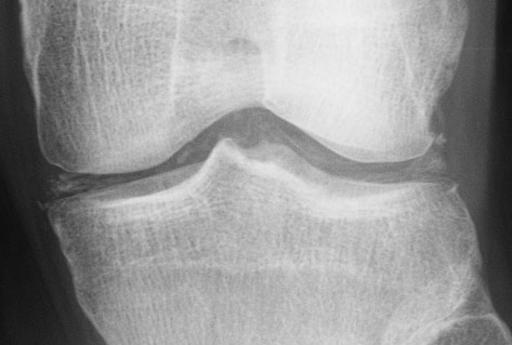Pseudogout
Pseudogout, also called calcium pyrophosphate dihydrate deposition disease (CPPD), is a medical disorder characterized by the accumulation of calcium pyrophosphate dihydrate crystals in the hyaline articular cartilage or fibrocartilage. more...
It is therefore a form of crystal arthritis, and — as its name indicates — often misdiagnosed as gout.
Patients with CPPD usually also have chondrocalcinosis, deposits of calcium in the cartilage. This calcification is initially only visible microscopically, but can eventually accumulate in amounts sufficient to be seen radiographically as well. Shedding of crystals into the joint produces an acute inflammatory synovitis resembling a classic gouty attack, which latter is caused by urate crystals.
Other manifestations of CPPD include pyrophosphate arthropathy.
CPPD is more common in women and usually affects the knee or wrist.
Diagnosis is by microscopy of fluid from a joint aspiration. Rhomboidal crystals should be seen under the microscope. These crystals exhibit weakly positive birefringence under polarized light. X-rays of the joint may show signs of chondrocalcinosis.
Joint aspiration reduces the pain but it may be necessary to use some combination of oral NSAIDs, colchicine and an intra-articular injection of a corticosteroid to control the pain. Unfortunately, there is no treatment that can remove the crystals already present around the joint area.
Read more at Wikipedia.org



